Has Colman’s lost its fire? The great mustard debate
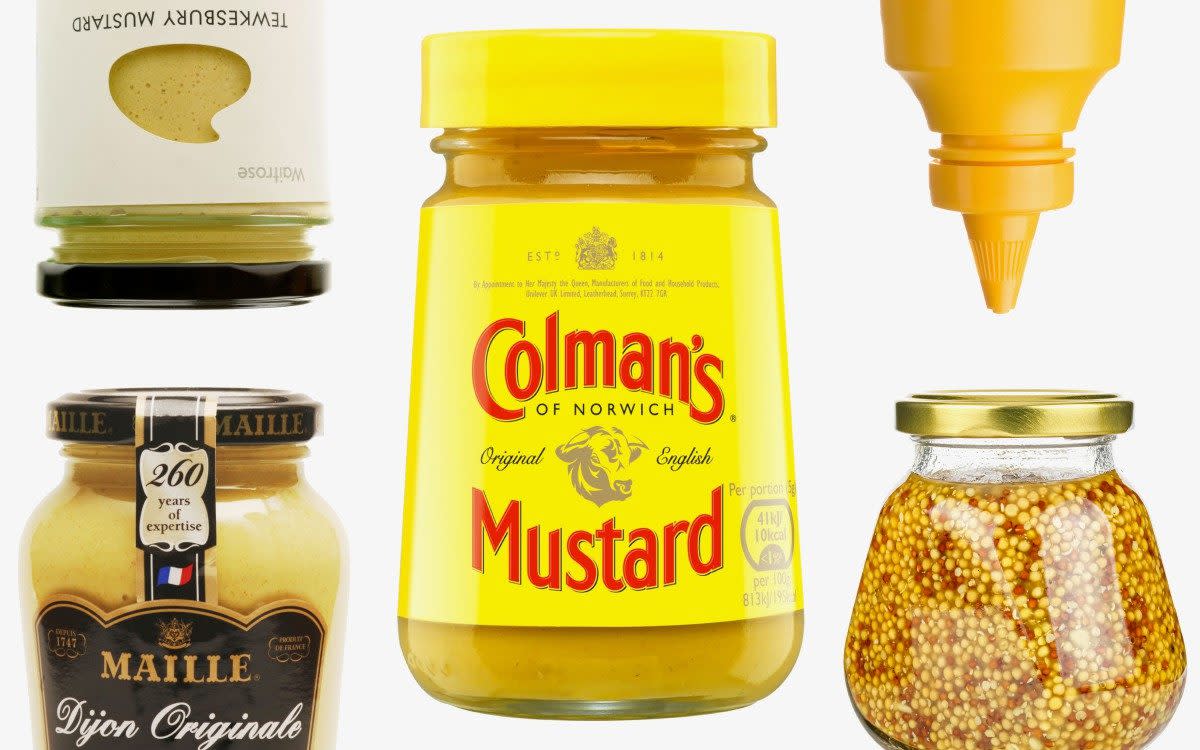
There has been no competition for the hottest topic on The Telegraph letters page this week. Forget war, royals or politics, one subject has set tongues wagging more than any other: mustard.
The first shots were fired by Tim Wilson of Bradfield in Berkshire. On March 5, he wrote in to ask if other readers had noticed that Colman’s “seems to have lost some of its fire”. He was worried that “perhaps as part of a diversity and inclusion drive,” Norfolk’s finest had “watered down the recipe to make the product accessible to those with a more delicate palate”. Colman’s has confirmed that there have been no recent changes to the recipe, although the company said in 2015 that it would be experimenting with milder variants, to appeal to a wider range of tastes.
Other readers were quick to reply to Mr Wilson. Bill Mason wrote that he had migrated away from Colman’s to Tesco’s own brand, finding it to have a “superior taste” as well as a keener price. Nick Pope, from Woodcote in Oxfordshire, suggested buying dry mustard powder rather than pre-mixed and letting the user prepare it to the desired level of heat. On Tuesday, readers reminisced about being prescribed a mustard poultice for a weak chest, and being offered a tube that was still priced in shillings.
No other condiment inspires such strong feelings among British diners. Ketchup is basically ketchup and Heinz is the best, however enthusiasts for Tiptree, Daddies and Stokes might bleat. Mayonnaise and its children are best left to the Americans and northern Europeans. Barbecue and brown sauces have specific-use cases.
Mustard, by comparison, is a birthright. No gastronomic coming-of-age is complete without learning the difference between English, French, wholegrain and American mustards. When to Maille and when to Colman’s. Which situations call for a bit of unbridled Norwich heat, and which for the sweet tang of America’s favourite: French’s.
“Mustard is the original condiment,” says Josh Daly, the UK brand owner of Grey Poupon, a Dijon mustard company that is now part of the Kraft group. “There are lots of different sauces, but mustard is an incredibly versatile ingredient. All the different types have their place. English mustard is a condiment you would put on a burger or have with a steak, where a French mustard is more about using it as an ingredient. American and English might be fighting over the same share of hot dog.”
Colman’s could be forgiven for experimenting with its flavour. Mustard has had an up and down few years. In 2019, the company finally abandoned its Norwich roots, closing its factory in Carrow to draw a veil over 160 years of manufacturing in the city (production has now moved to Burton-on-Trent). The final batch made there replaced the best before label with the message: “Norwich’s Last. By Its Finest. July 24th 2019”.
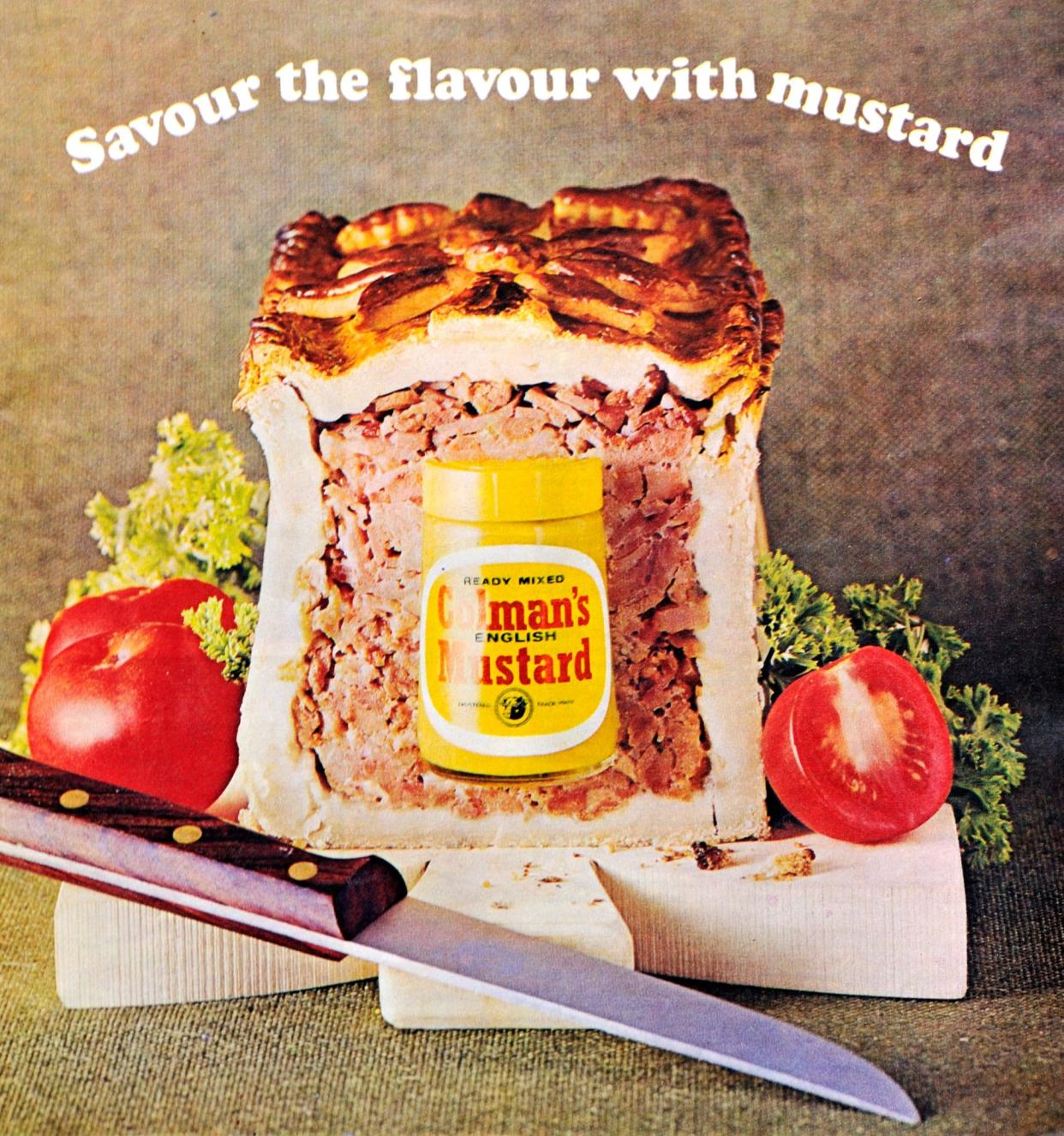
Covid didn’t help. In 2022, Colman’s reported that sales had fallen 3.8 per cent year on year, largely due to a 13.9 per cent drop in demand for English mustard. Mustard in general had a poor pandemic, with worldwide supplies affected by a shortage of seed that became even more acute after Russia’s full-scale invasion of Ukraine in 2022. Lots of mustard seed is grown in Russia and Ukraine, but it is the milder seed preferred by central and eastern Europe. The demand for the nose-tingling type put pressure on French supplies. Most of the mustard seed used in France is grown in Canada, which accounts for more than 80 per cent of the country’s supply, but a poor 2021 harvest led to a huge drop in production. Given that the French get through a kilo per head every year, it wasn’t long before the country’s shopkeepers reported bare shelves and customers began hoarding jars to secure their fix.
This stands in contrast to the UK, where there is increased condiment competition. The most prominent upstart is Nando’s, which now has a market-conquering range of sauces, including peri-peri and a peri-peri mayonnaise, Perinaise, inspired by the ones available in its restaurants. In 2022, Nando’s overtook Colman’s for total sauce sales, a remarkable ascent given that it only began selling them in 1999. Its success reflects a general trend for hot sauces and chilli and away from traditional condiments such as Colman’s.
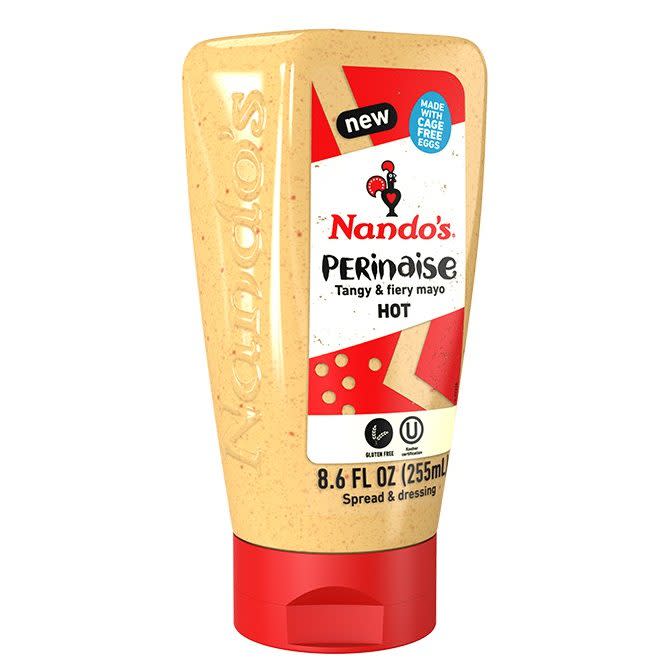
Josh Daly says that Dijon mustard’s milder flavour makes it more resilient in the market, too. “Younger foodies are discovering that mustard is something you can put in dressings or sauces,” he says. Grey Poupon has also enjoyed an unexpected boost as a point of cultural reference in hip-hop music. In The Life of Pablo, released in 2016, Kanye West rapped “Yeezy, Yeezy, Yeezy, this is pure luxury / I give ‘em Grey Poupon on a DJ Mustard, ah.” Journalists have documented more than 100 mentions of Grey Poupon in rap songs, the kind of publicity you cannot buy.
There is a decent historical case for mustard being the original condiment. Starting in China and Africa, there is evidence of the mustard plant having been cultivated for thousands of years. The Romans were probably the first to use it in the form we would recognise today. The word, mustard, is a contraction of the Latin mustum ardens, meaning burning must, because the mustard was ground up with grape must. A recipe for boar with a mustard glaze appears in De Re Coquinaria, a Roman cookbook from the fifth century. The first English mustard was sold in 1720 by an enterprising woman in Durham. The terminology has become confusing. French’s is a brand name for the most popular American mustard. French mustard, the sweeter, darker brown variety, was invented by Colman’s in the 1930s and has nothing to do with France. Meanwhile, Dijon mustard is not a protected product and therefore often made elsewhere.
At the risk of alienating some of the letter writers, my personal favourite is Edmond Fallot, a family-owned French brand from Burgundy. Its classic Dijon mustard is smooth and balanced enough that you can eat it from the jar with a spoon, but retains enough kick to perk up any sausage or confit de canard. Apart from its versatility, the best thing about it is that it comes in enormous 600g jars. The larger vessel, less a pot than a great amphora, changes the psychology of mustard. A small jar, like those Colman’s tends to come in, encourages you to dib and dab, using little bits here and there. With a huge jar of the stuff, you slather freely. Rather than using mustard to enhance dishes, I start to think of dishes as opportunities to eat mustard. As a consequence, I get through tonnes of Dijon, while I nurse the English stuff slowly. In mustard as in other areas of national competition, size isn’t everything, but it can help.
Five classic mustards to try
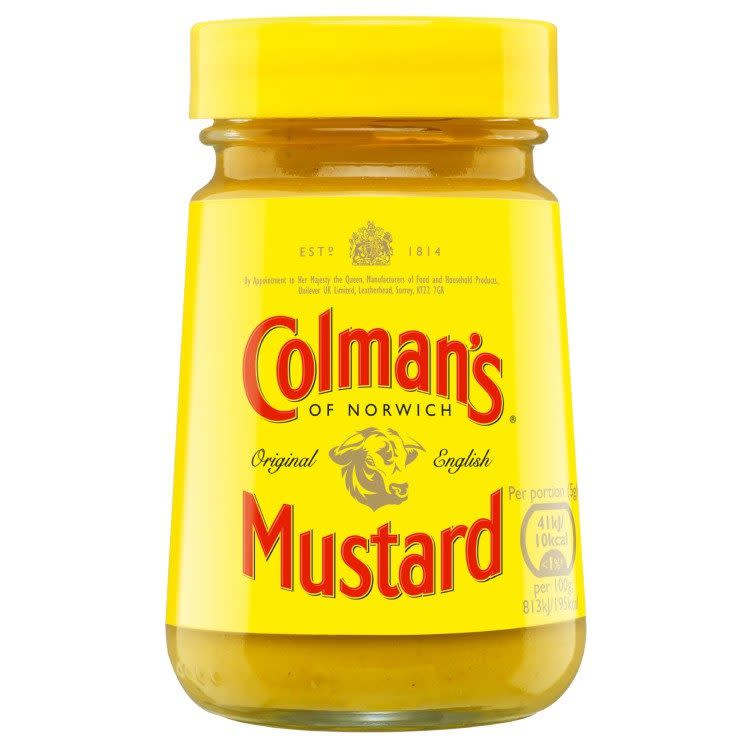
English
Made from a mixture of different seeds along with sugar, salt and often including wheat flour to make it thicker, powerfully-flavoured English mustard gets its distinctive colour from the addition of turmeric. For maximum heat, mix powdered mustard with just enough water (or vinegar) to form a paste. Serve with ham and beef of any type or try mashing a dab into your egg mayonnaise or cheese toastie.
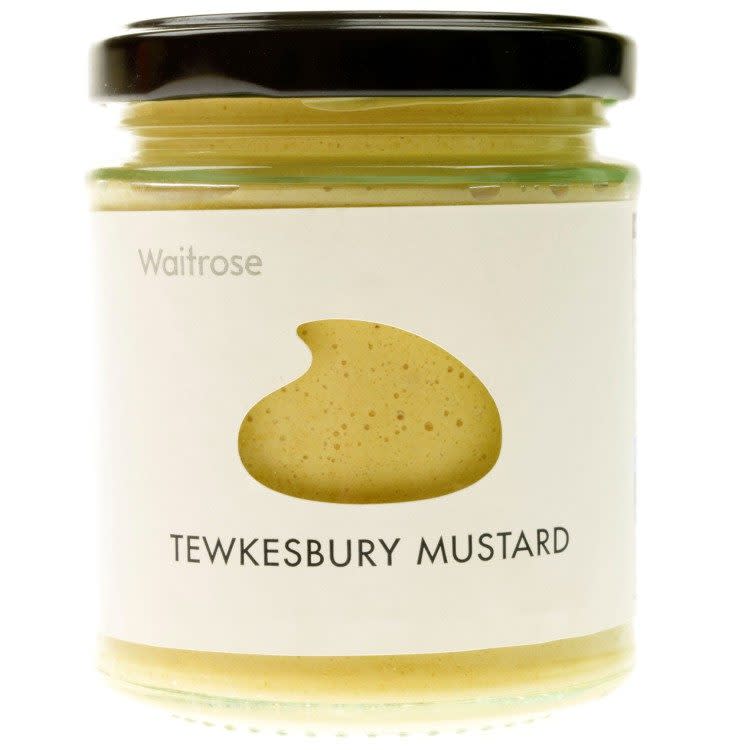
Tewkesbury
A flavour-packed blend of mustard and horseradish, Tewkesbury was originally sold dried in balls ready for grating. Now available in jars, please don’t keep it just for roast beef – try mixing with crème fraîche to serve alongside fishcakes or grilled salmon or add a spoonful to the cream mix when making a potato gratin.
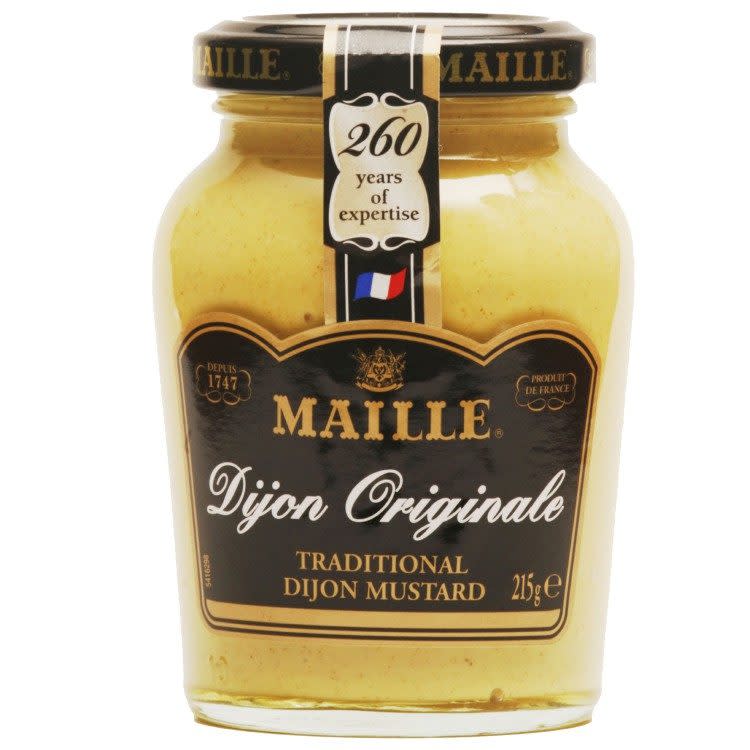
Dijon
Smooth and mellow, this is one of the most versatile mustards for cooks. A spoonful will enhance the flavours of creamy and cheesy sauces and also makes a wonderful addition to dressings including vinaigrette and mayonnaise. Try sweetening with honey and mixing with chopped fresh dill and olive oil or buttermilk for a delicious Scandi-style dressing for smoked or cured fish.
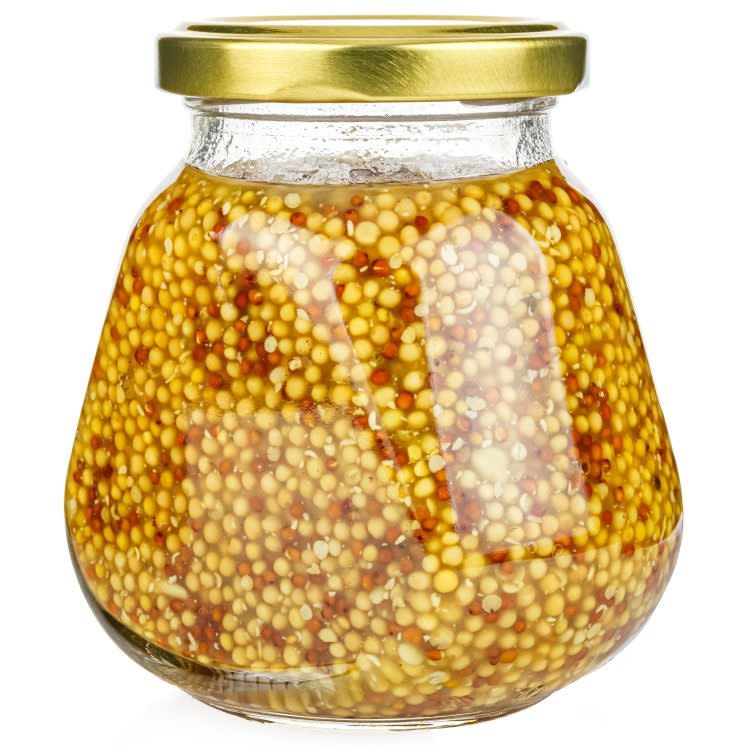
Wholegrain
A blend of crushed whole mustard seeds, mustard powder, sugar and varying spices such as cinnamon and pimento. This will do a great job of livening up simple dishes such as mashed potatoes and will cut nicely through fattier foods such as cheese on toast. It makes the perfect partner for pork sausages.

American
A smooth, squirtable sauce with a texture similar to ketchup, this is one of the mildest options available. Its vibrant yellow hue pairs well with a browny-pink hotdog but it also helps to pep up a bacon sandwich.


